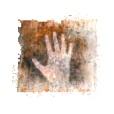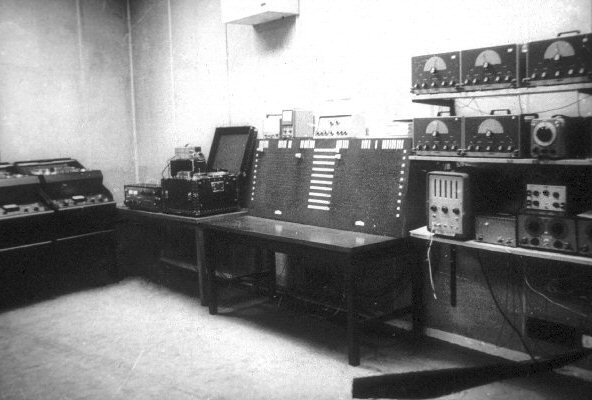Please wait a few moments while we process your request

Ricardo Dal Farra
Latin American Electroacoustic Music Collection
Historical Background
Introduction (1)
The development of electroacoustic music seems to be associated with a few countries where the pioneering activities started. But the creation of music using electroacoustic technologies in a contemporary manner (in spite of some differences I will refer to the term "electroacoustic music" in this document) has also been of great interest to composers living in Latin American countries since before the 1950s. However, there is a significant lack of information in this respect, and little research has been conducted in this area.
Having started to work in the electroacoustic music field during the mid '70s in my native country of Argentina, I found it very difficult to obtain information on related activities in surrounding countries and even in my own city. Although challenging, it was nevertheless possible to find recordings by composers living in Europe or North America, but it was very difficult to locate any by local or regional composers. What appeared during my initial years of research to be a paradox later became almost a constant. One could find composers’ names and the titles of their works, but not their music. It took me a very long time to to obtain a few electroacoustic music recordings by composers living or working in Latin American countries and to discover a world of sound that had been partially hidden, if not completely lost.
If people were interested in art and new technologies, and if a significant body of electroacoustic music works by Latin American composers existed, why then was it so difficult to find recordings or at least some basic information on the subject? There is no simple answer, but during my search I did discover a few clues that underscored the complex relationships between the economical, political, cultural and social spheres.
In various Latin American countries, universities, state organizations and major private foundations had taken initiatives from time to time to support art research and the use of new media, but most had stopped short of developing the resources to document the processes and preserve the results. Many early tape compositions had been lost or the master recordings damaged, and there no longer existed scores or documentation on these. Fortunately, however, a large number of recordings could still be saved. Tapes were stored in private studios and composers’ houses, and many had been sleeping on shelves in large institutions for decades, with no action taken to conserve the works or provide access to the people interested.
To preserve a chapter of our past while trying to learn from it is no simple task. We can all learn from the actions of the others that came before us (and surely not just about music). Creativity abounds in Latin America, and this, of course, is in keeping with our past. I believe we need to nurture our memories, and I wish to help to that process by preserving some traces with concrete action.
The development of electroacoustic music seems to be associated with a few countries where the pioneering activities started. But the creation of music using electroacoustic technologies in a contemporary manner (in spite of some differences I will refer to the term "electroacoustic music" in this document) has also been of great interest to composers living in Latin American countries since before the 1950s. However, there is a significant lack of information in this respect, and little research has been conducted in this area.
Having started to work in the electroacoustic music field during the mid '70s in my native country of Argentina, I found it very difficult to obtain information on related activities in surrounding countries and even in my own city. Although challenging, it was nevertheless possible to find recordings by composers living in Europe or North America, but it was very difficult to locate any by local or regional composers. What appeared during my initial years of research to be a paradox later became almost a constant. One could find composers’ names and the titles of their works, but not their music. It took me a very long time to to obtain a few electroacoustic music recordings by composers living or working in Latin American countries and to discover a world of sound that had been partially hidden, if not completely lost.
If people were interested in art and new technologies, and if a significant body of electroacoustic music works by Latin American composers existed, why then was it so difficult to find recordings or at least some basic information on the subject? There is no simple answer, but during my search I did discover a few clues that underscored the complex relationships between the economical, political, cultural and social spheres.
In various Latin American countries, universities, state organizations and major private foundations had taken initiatives from time to time to support art research and the use of new media, but most had stopped short of developing the resources to document the processes and preserve the results. Many early tape compositions had been lost or the master recordings damaged, and there no longer existed scores or documentation on these. Fortunately, however, a large number of recordings could still be saved. Tapes were stored in private studios and composers’ houses, and many had been sleeping on shelves in large institutions for decades, with no action taken to conserve the works or provide access to the people interested.
To preserve a chapter of our past while trying to learn from it is no simple task. We can all learn from the actions of the others that came before us (and surely not just about music). Creativity abounds in Latin America, and this, of course, is in keeping with our past. I believe we need to nurture our memories, and I wish to help to that process by preserving some traces with concrete action.
Ricardo Dal Farra © 2004 FDL
Index:
- Foreword
- Historical Background
• Introduction
• Opening the box
• Music here... music there
• Tie it with wire!
• Bake, freeze... eat and enjoy!
• Conclusion
• Acknowledgements
• References - Finding Aids in the Music Collection
• Public music selection (558 titles)
- Audio player
- List by composer
• Complete collection (1723 titles)
- Search by composition
- Search by composer
• Other Resources
- Biographies
- Interviews
- Scores
- Pictures



